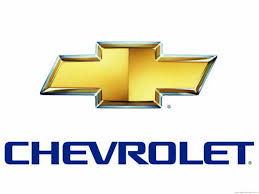Camaro Z28 V8-305 5.0L VIN F FI (1991)

Refinish all horizontal surfaces using the following procedure.
-
Remove the clearcoat layer from all horizontal surfaces and the top surfaces of fenders and quarter panels.
NOTE:
In some cases, it will be necessary to remove the clearcoat from the upper vertical surfaces of fenders, doors and quarters (approximately 3"), and the
top areas directly above the front and rear wheelhouse openings.
-
Lightly sand any previously exposed base color to remove any chalky residue from the surface.
-
The vertical surfaces should be sanded and colorcoated to the next lower breakline (typically the body side moldings) for color uniformity of the
repair.
IMPORTANT:
The following procedure covers clearcoat degradation only. It does not address any other paint condition.
PROCEDURE:
1.
Some vehicle components will be removed, while others will require masking. The list located at the end of this bulletin will establish the removal
items. Items not found on the list and non repair areas are to be masked.
2.
Prior to removing the paint finish, clean the area to be refinished with soap and water, followed by an appropriate wax and grease remover.
3.
Mask the remaining moldings and hardware for protection during sanding.
4.
Remove the clearcoat material from all horizontal surfaces (and tops of fenders and quarters) using a DA (dual action orbital sander) and # 120
grit sanding discs. Lightly sand any previously exposed base color to remove any chalky residue from the surface.
NOTE:
Chemical stripping is not recommended because of negative Impact to moldings, non-metal components, ELPO and environmental concerns.
5.
Lightly sand the unaffected vertical panels to the next lower breakline, smooth and "featheredge" the surface to be refinished with # 240 or # 320
grit sandpaper for maximum adhesion.
6.
Blow off the sanding dust and residue.
7.
Remove masking tape and remask all necessary areas for priming.
8.
Wipe and clean repair area with an appropriate wax and grease remover.
9.
Wipe repair area with a tack rag.
10.
Apply a coat of self etching or epoxy primer to the bare metal areas exposed during the sanding process. Follow manufacturer's instructions and
recommended dry times.
Typical materials would be: DuPont 615S/616S, BASF DE17/PR80/DA18, PPG DP40/DP401 or equivalent.
V.O.C. materials would be: DuPont 615S/616S, BASF DE17/PR80/DA18, PPG DCP21/DCP212 or equivalent.
11.
Apply two to three medium wet coats of primer surfacer to the entire repair area (including vertical surfaces) of the vehicle, following
manufacturer's instructions for application and film build requirements.
NOTE:
A guide coat Is recommended to highlight high and low spots during the wet or dry sanding process.
Typical materials would be: DuPont 1120S/1130S/1125S, BASF DP20/PR80/PH36, PPG K36/DT870/K201 or equivalent.
V.O.C. materials would be: DuPont 275S, BASF HP400, PPG DCP21/DCP212 or equivalent.
12.
After adequate drying time, wet sand with # 400 grit (or finer) or dry sand with # 320 grit (or finer) sand paper.
13.
Repeat steps 6 through 9 and remask the vehicle.
14.
Apply a medium coat of primer sealer to the entire repair area.
Typical materials would be: DuPont 2610S/2605S, BASF DP21/DH60/PR80, PPG DP40/DP401 or equivalent.
